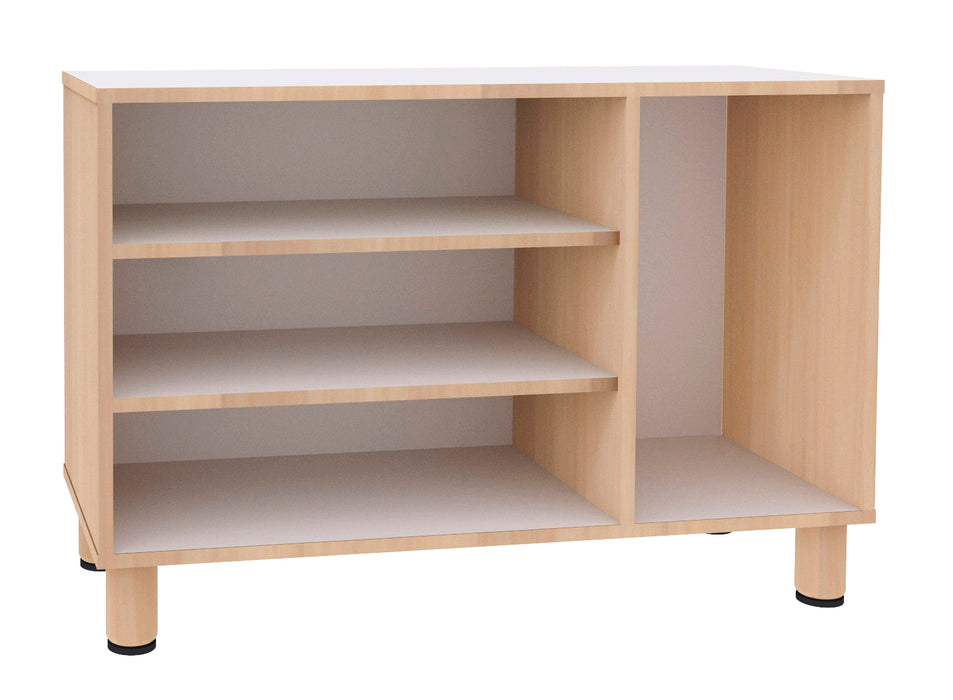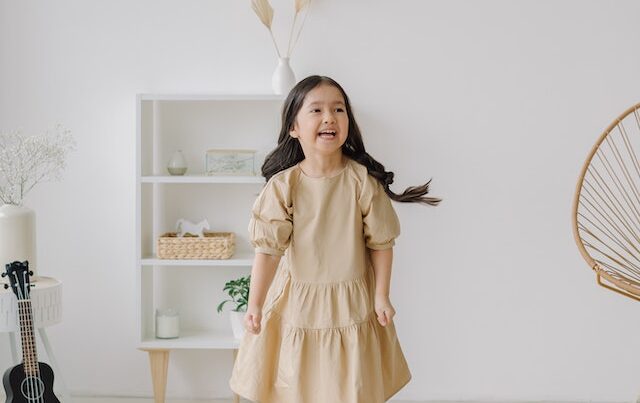The Benefits of Montessori Shelves
If you’re looking for an interesting and unique way to organise your child’s learning environment, consider Montessori shelves. These shelves are designed specifically for Montessori classrooms, but they can be used in any home setting. They offer a variety of benefits that you and your child will love. In this article, we will discuss the benefits of Montessori shelves and provide tips on how to use them in your home!
What Are Montessori Shelves?
Montessori shelves are typically made of wood and feature several compartments or drawers. They are usually placed on the wall, with each compartment offering space for different learning materials. These include puzzles, books, and other materials that can help to organise your child’s learning environment. By segmenting these items into separate boxes, it allows your child to easily find what they need without having to search through a cluttered shelf.
The Benefits of Montessori Shelves
One of the biggest benefits of using Montessori shelves is that it helps keep a clutter-free environment in the classroom or home. Instead of storing all the toys and materials in one place, the compartments allow you to divide them up into their respective categories, making it easier to find the right items when needed. With the help of labels and colors, your child can quickly identify which shelf has what item on it.
In addition, Montessori shelves also provide an opportunity for children to develop their organizational skills by sorting through the different boxes or cubbies and neatly arranging them in a way that makes sense to them. This could be sorting by color, shape or size; it’s ultimately up to your child’s preference and style of learning.
Montessori shelves are not only beneficial for organizing materials but can also be used as teaching tools. For example, you can use one shelf for puzzles and another for books, allowing children to easily access both types of materials. You can also use the shelves to teach your child about sorting and categorizing different items. Through this exercise, they will learn how to recognize patterns and group related items together.
Finally, Montessori shelves provide an opportunity for open-ended play as children explore the variety of items on the shelves. This encourages their natural curiosity and helps them develop problem solving skills as they experiment with different combinations of materials. By providing access to a variety of objects, children are able to engage in creative play and create meaningful experiences with their surroundings.
Types Of Montessori Shelves
Montessori shelves come in a variety of shapes and sizes, from small bins to large units with multiple levels. Each type has its own purpose and is designed to meet the needs of children at different developmental stages.
The most basic Montessori shelf includes two or three levels of open shelving with a few colorful dividers placed between each level. This helps keep items organized while providing access to all materials. The lower shelves can be used for younger children as they learn how to match objects and sort them into categories. The higher shelves provide more space for older children who are beginning to explore independent play activities.
More complex Montessori shelving systems may include additional features such as rolling carts, pull-out drawers, and even adjustable levels. These additional features can help create a more dynamic learning environment for children of different ages and abilities. For example, the rolling carts can be used to store materials that the child will need during their work period and then it can be easily moved out of the way while they are working. The pull-out drawers allow easy access to a variety of objects and activities that can be used as part of larger lesson plans or research projects. Adjustable level shelving allows a teacher to customise the area based on the needs of their children at different developmental stages.

Difference Between A Regular Shelf And A Montessori Shelve
The main difference between a regular shelf and a Montessori shelf is the physical design. Traditional shelves are constructed with straight lines and typically do not provide much room for customization or personalization. Montessori shelves, on the other hand, often feature curved edges and adjustable levels that allow teachers to customize the area according to their students’ individual needs. The shelves also come in different sizes, allowing teachers to create large or small spaces depending on the size of their classroom.
Additionally, many of these shelves have drawers and compartments built in, which can be used to store materials such as books, games, manipulative and art supplies. Finally, some Montessori shelves have wheels attached so they can be moved around easily from one place to another. This is especially useful for classrooms that need to be rearranged regularly or when a teacher needs to create temporary learning areas in other parts of the room.
What To Keep In Mind While Looking For Montessori Shelves
1. Consider the size and age of your child. Montessori shelves come in a variety of sizes so it’s important to pick one that is suitable for your child.
2. Look for shelves with interesting, developmentally appropriate items. The right materials will be both educational and engaging for your little one.
3. Ensure stability and safety when selecting a shelf. Make sure that all pieces are securely attached to prevent accidents.
4. Think about how you plan to use the shelf. Shelves can often be used in multiple ways, so it’s helpful to have an idea of what activities you’d like to do with them ahead of time.
5. Consider the quality and durability of the shelf. Look for materials that are sturdy and will last through the wear and tear of everyday use.
6. Test out different shelves in person if possible. It’s a good idea to get a feel for each item before you commit to buying it so you know it will be right for your family.
7. Finally, think about how you can customize your shelf over time as your child grows and develops. This way, they’ll always have something new to explore!
What To Avoid When Buying A Shelf
1. Don’t buy a shelf that is too large or too small for your space—this can be difficult to make up for if you find the perfect shelf but it’s not quite the right size.
2. Avoid purchasing shelves made of cheap materials, as these are likely to break easily and won’t last very long.
3. Don’t forget to budget for additional features such as shelving accessories, wall anchors, etc., which may be needed to get the most out of your shelf.
4. Finally, don’t be tempted by overly complicated designs that might look great in pictures but prove impossible to assemble in real life! Keep it simple and functional whenever possible.
Conclusion
Montessori shelves offer a great way to organise your child’s learning environment. They are designed to be interactive and encourage exploration, problem-solving, and creativity. With their unique design, they can bring an added level of interest to the classroom or playroom. By providing your child with access to Montessori materials, you’re allowing them to develop their own individual learning style. When used properly, Montessori shelves can be the perfect addition to any home!




